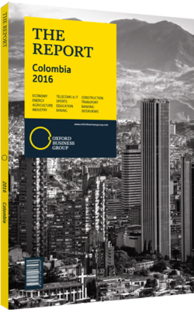Juan Pablo Córdoba Garcés, President, Colombian Stock Exchange (Bolsa de Valores de Colombia, BVC): Interview

Interview: Juan Pablo Córdoba Garcés
How can the stock exchange bring stability to the Colombian financial markets?
JUAN PABLO CÓRDOBA GARCÉS: The primary lesson of the global financial crisis is that excess risk concentration in the banking sector can lead to systemic events. This must not be repeated and all regulatory efforts are focused on avoiding this risk concentration among banks, particularly through capital and liquidity measures. In this regard, capital markets will have to play a much more important role in financing companies in the medium and long run. Thus, it is preferable that the risks assumed by institutional investors are borne by the capital markets and not by the banking sector. In markets like Colombia, the question is if the capital market will be able to rise to this challenge of fulfilling the credit required in the medium and long term. Governments must understand this key issue and adopt measures to implement this financing strategy.
To what extent is the performance of the stock exchange subject to behaviour in the oil sector? CÓRDOBA: Since 2007, the oil sector has had significant importance in the local stock exchange; however, it has traditionally never been as important as the financial or industrial sectors. Taking into account the small size of the market, it is perfectly possible for all sectors to grow and increase their participation. Nowadays, many industries are under-represented, but we want all economic sectors to be present; it should be a true reflection of the economy.
How can Colombian firms’ reach in the Mercado Integrado Latinoamericano (MILA) be increased?
CÓRDOBA: The Colombian market, despite great progress, remains small, with few companies listed. Although Colombia has the fewest companies in MILA, it is ranked above Peru and behind Chile in terms of market capitalisation. This limited presence is related to the small number of local firms on the country’s capital markets compared to in the wider economy. There are many companies in the real economy that could raise financing through the markets but are not doing so. Many of these firms have multiple financing possibilities and liquidity provided by national and international banking entities. This is a fortunate situation for Colombia, but has made it even less necessary to for companies to use the capital markets. That said, it is important to have various financing options available because these options can open and close due to external factors. Even if firms have access to favourable credit conditions from banks, they also have to keep in mind the possibility of listing on the capital markets. This provides competitive conditions and complements bank financing.
What are the impacts of Mexico joining the MILA?
CÓRDOBA: The integration of Mexico has been a key event because it raises the critical mass of the capital markets while creating favourable synergies thanks to its association with the Pacific Alliance. It has also served to re-launch the concept of MILA. After three years of linking operations there are still regulatory, technical, knowledge and operational challenges. Colombia, Peru and Chile have made great progress in promoting reciprocal knowledge and bilateral relations. This confidence takes time and now it is Mexico’s turn to integrate. Regulatory priorities include speeding up the adaptation of the regulatory framework; widening the diversity in equity products; and allowing pension funds, mutual funds and collective portfolios to invest regionally. These investment vehicles have national limitations and local and restrictive regulations, which go against MILA’s cross-border vision. Additionally, there are tax issues that hinder investment between countries. In the short term, we have to create the basic regulatory framework to consider MILA a real Latin American integrated market and to eventually work on its standardisation.
You have reached the limit of premium articles you can view for free.
Choose from the options below to purchase print or digital editions of our Reports. You can also purchase a website subscription giving you unlimited access to all of our Reports online for 12 months.
If you have already purchased this Report or have a website subscription, please login to continue.

